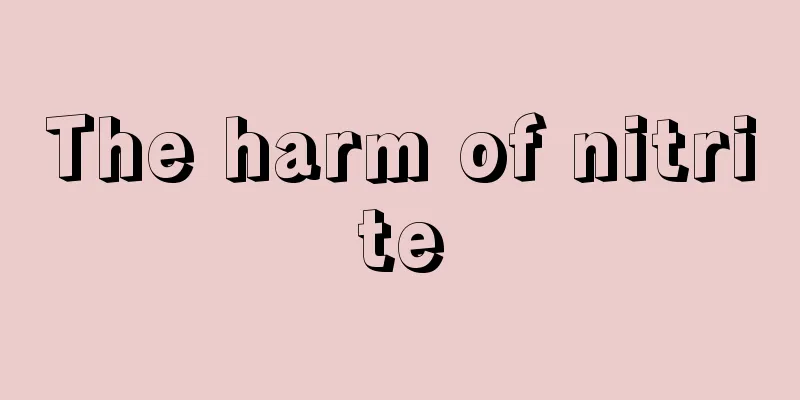The functions and effects of Platycladus orientalis leaves can cure these diseases

|
Platycladus orientalis leaves are also called Platycladus orientalis leaves. Their greatest effect is to stop bleeding, eliminate rheumatism, resolve phlegm and relieve cough. They are effective in treating hemoptysis, hematuria and metrorrhagia. You must know the usage and dosage when using the medicine, and this medicine is also very effective when applied externally. 1. Platycladus orientalis leaves are used to treat rheumatoid arthritis. The pain is like being bitten by a tiger and spreads throughout the body. The patient cannot move. The pain is extreme when moving and the patient is restless day and night. Use 5 qian of Platycladus orientalis leaves, 2 qian each of Akebia, Chinese Angelica, Safflower, Notopterygium wilfordii and Saposhnikovia divaricata. Decoction in water. (《Compendium of Materia Medica》) 2. Apply Platycladus orientalis leaves to disperse blood and apply to the sores, and pound with sugar to apply. It can also treat bruises. Essentials of the Properties of Raw Medicinal Herbs 3. Platycladus orientalis leaves are used to treat nosebleed of several liters and unconsciousness: pomegranate flowers and cypress leaves in equal parts. Grind into powder and blow into nose. (Puji Fang) 4. Platycladus orientalis leaves are called tonic, which does not seem to be true, but they can be applied to burns and boils, promote tissue growth and kill insects, and are best for roasting and treating frostbite. "Other Records" 5. Burn arborvitae leaves to treat frostbite. 《Rihuazi Materia Medica》 6. Platycladus orientalis leaves are used to treat hematuria: Platycladus orientalis leaves, Coptis chinensis (roasted and ground). Take three grams with wine. ("Emergency Prescription") 7. Platycladus orientalis leaves can be used as an adjuvant in hemostatic prescriptions for vomiting blood regardless of cold or heat. To treat vomiting blood due to cold, it is used together with dried ginger, such as the Baiye Decoction in "Jinkui Yaolue"; to treat vomiting blood due to heat, it is used together with Shengdi, such as the Sisheng Drink in the recipe. 8. Platycladus orientalis leaves are used to treat rheumatism and pain in the joints: boil the Platycladus orientalis leaves into juice, and mix it with koji rice to make wine to drink. (Compendium of Materia Medica, Cypress Leaf Wine) 9. If used raw, Platycladus orientalis leaves are good at cooling blood and stopping bleeding and heat; if roasted into charcoal, they can stop bleeding. 10. Platycladus orientalis leaves are an important medicine for replenishing yin. They are mostly dry in nature. If taken for a long time, they will greatly benefit the spleen and earth and nourish the lungs. Supplement to Bencao Yanyi 11. Platycladus orientalis leaves are used to treat deep abscesses: 1 liang of Platycladus orientalis leaves, 5 qian of alum, and 1 liang of wine. First, crush the Platycladus orientalis leaves, then dissolve the fine alum powder in wine, then pour the Platycladus orientalis leaves into the wine and mix well, apply to the affected area, and change the dressing twice a day. (Selected Materials from Jiangsu Province's Exhibition on New Chinese Herbal Medicine Treatment Methods) 12. Platycladus orientalis leaves cool blood, promote qi circulation, dispel wind, promote urination, and disperse blood stasis. Records of Collecting Medicinal Herbs in Lingnan 13. Platycladus orientalis leaves are used to treat dysentery in children: boil the leaves into juice and drink it instead of tea. (Experienced Prescription) 14. Platycladus orientalis leaves can treat hemorrhoids, intestinal wind, internal toxins, and persistent bleeding: burn the leaves and mix them into ashes for oral administration. (《One Hundred and One Prescriptions》) 15. Platycladus orientalis leaves are used to treat intestinal wind, internal toxins, dysentery caused by alcohol, and persistent bleeding: 2 liang of young Platycladus orientalis leaves (steamed and dried nine times in the sun), 1 liang of old Sophora japonica flowers (fried until half black). Grind the above ingredients into powder, and make pills with refined honey, the size of sycamore seeds. Take 40 to 50 pills each time, on an empty stomach with warm wine. (Puji Fang, Platycladus orientalis powder) 16. Platycladus orientalis leaves are used to treat vomiting blood, epistaxis, bloody dysentery, and metrorrhagia. It lightens the body and replenishes qi, makes one resistant to cold and heat, removes dampness and arthritis, and promotes the growth of new tissues. "Famous Doctors' Records" |
<<: What is the method of calf hair removal?
>>: What are the effects, functions and methods of consumption of red peony root?
Recommend
Nursing diagnosis of gastric cancer with pyloric obstruction
For many gastric cancer patients, because maligna...
Can goose grass cure rhinitis? The effect is quite good
It is very uncomfortable to suffer from rhinitis,...
Summary of Vitamin E Beauty Tips
We all know that free radicals in the body are th...
Are there any symptoms of zinc deficiency in the human body? What are the symptoms?
Zinc is an essential element for the human body. ...
What is the reason for night sweats on the head
Night sweats are a disease phenomenon in traditio...
What are the causes of prostate cancer
At present, there is no clear answer to the cause...
What are the reasons for frequent fatigue
Many women will find that they often feel tired, ...
What is the cause of renal hamartoma
The causes of renal hamartoma include genetics, e...
What are the effects of sodium hyaluronate
As we get older, various systems in our body will...
How does rectal cancer get to you
Rectal cancer is a common malignant tumor in the ...
How to remove the blackened teeth caused by smoking
Nowadays, more and more people are smoking, inclu...
Is it necessary to clean the bowels once or several times?
Should bowel movements be cleaned out once or sev...
Prostate cancer is easily confused with 5 diseases. What tests can be used to distinguish them?
Prostate cancer is common in men over 50 years ol...
How to knead flour
When people make some pasta in life, we have to m...
The difference between glacial acetic acid and glacial acetic acid
Many people are full of questions about glacial a...









